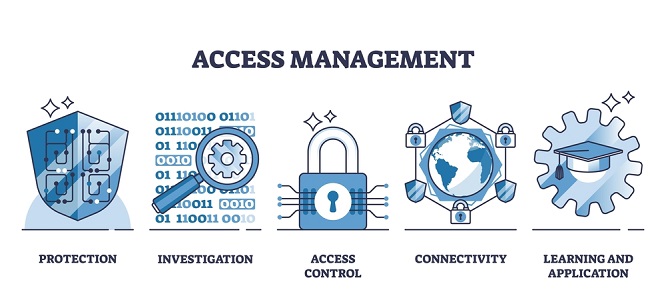 In today’s digital landscape, cybersecurity is not just a technical requirement — it’s a business imperative. According to IBM’s *Cost of a Data Breach Report (2024)*, the average U.S. business lost $9.05 million per breach, and it took an average of 287 days to detect and contain an incident. These alarming figures highlight one critical truth: establishing a strong security culture is essential to protecting your organization’s future.
In today’s digital landscape, cybersecurity is not just a technical requirement — it’s a business imperative. According to IBM’s *Cost of a Data Breach Report (2024)*, the average U.S. business lost $9.05 million per breach, and it took an average of 287 days to detect and contain an incident. These alarming figures highlight one critical truth: establishing a strong security culture is essential to protecting your organization’s future.
A security culture empowers employees to take responsibility for protecting company data and assets. By promoting awareness, training, and proactive action, your team becomes the first line of defense against cyber threats. This guide from Integrated Technology Systems will help you understand, build, and sustain a robust security culture in your organization.
What Is a Security Culture?
A security culture refers to the shared attitudes, beliefs, and behaviors toward cybersecurity across an organization. It’s not just about having strong firewalls or antivirus systems — it’s about ensuring that every team member understands and prioritizes security in their daily tasks.
Building a security-focused culture goes beyond the IT department. From leadership to frontline staff, everyone must recognize their role in protecting sensitive data and digital assets. A proactive security culture creates awareness, accountability, and resilience — all vital components of an effective cybersecurity strategy.
Strong security cultures rely on consistent education, updated policies, and regular assessments to adapt to new risks. When everyone contributes, organizations can prevent breaches, detect threats faster, and respond efficiently to minimize damage.
Why a Security Culture Matters
1. Reduces Risk and Prevents Attacks
A well-developed security culture helps employees identify and report suspicious activity before it escalates into a costly breach. Awareness and quick responses significantly reduce risk exposure.
2. Empowers Employees
When staff understand cybersecurity best practices, they take ownership of protecting their devices, accounts, and company information — strengthening your organization from the inside out.
3. Protects Data and Reputation
Data loss or intellectual property theft can lead to serious financial and reputational harm. A strong security culture reinforces practices like secure passwords, restricted access, and careful data handling.
4. Ensures Regulatory Compliance
Many industries are governed by strict data protection regulations. Promoting a security culture ensures your business remains compliant, avoiding fines and maintaining client trust.
5. Builds Trust and Credibility
Today’s clients and investors expect robust cybersecurity. Companies that demonstrate commitment to security stand out as trustworthy, reliable, and professional partners.
6. Improves Employee Confidence
Employees feel safer and more valued when they know their organization prioritizes data protection and takes proactive steps to secure their workplace environment.
Key Components of a Strong Security Culture

To build a resilient security culture, businesses must integrate cybersecurity principles into every layer of the organization. Core components include:
- Executive Buy-In: Leadership must champion cybersecurity, allocate resources, and set a strong example.
- Clear Policies and Procedures: Define and communicate rules for password management, access control, and incident reporting.
- Employee Training and Awareness: Regular workshops, phishing simulations, and refresher courses keep staff alert and informed.
- Open Communication: Establish simple channels for reporting threats and sharing updates about security improvements.
- Risk Management: Continually assess vulnerabilities and implement mitigation strategies.
- Ongoing Improvement: Conduct audits, evaluate new threats, and refine protocols to stay ahead of cybercriminals.
With these elements in place, your business can protect sensitive data and strengthen resilience against evolving cyber threats.
6 Best Practices for Building a Security Culture
- Prioritize Security Across All Departments: Make cybersecurity part of every decision, from management strategy to daily operations.
- Invest in Continuous Education: Provide consistent training on phishing, malware, and social engineering tactics.
- Develop and Enforce Policies: Ensure that your team understands how to handle passwords, devices, and sensitive data.
- Leverage Security Technology: Use tools like encryption, firewalls, and multi-factor authentication to enhance protection.
- Perform Regular Risk Assessments: Identify and address vulnerabilities before attackers can exploit them.
- Commit to Continuous Improvement: Review security policies often and adapt them to emerging threats and technologies.
Start Building Your Security Culture Today
Creating a security culture takes time, leadership, and collaboration — but the payoff is enormous. From reducing breach risks to strengthening trust and compliance, a proactive security mindset benefits your entire organization.
Integrated Technology Systems helps businesses build robust cybersecurity frameworks that foster awareness, accountability, and resilience. Contact us today to learn how our cybersecurity training and technology solutions can help your organization create a culture of security that protects your data and future success.
Integrated Technology Systems
6 East 45th Street, Suite 400
New York, NY 10017
212-750-5420
https://www.itsnyc.com



